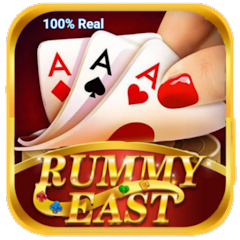Title: Rummy East: A Deep Dive into the Timeless Card Game
Introduction:
- Rummy East: A classic card game with roots in East Asia.
- Blend of skill, strategy, and luck.
- Evolved into various regional variations globally.
I. Historical Background of Rummy East:
A. Asian Origins:
- Tracing roots to East Asia.
- Influences of traditional Asian card games.
- Cultural significance in the region.
B. Global Spread:
- Global popularity through migration and globalization.
- Adoption and adaptation in different countries.
- Cultural bridge between East and West.
II. Basic Rules of Rummy East:
A. Deck and Cards:
- Standard 52-card deck.
- Variations with jokers or additional decks.
B. Setup:
- Dealing cards to players.
- Formation of initial meld or sets.
C. Objective:
- Goal of Rummy East.
- Achieving victory through strategic play.
D. Turns and Gameplay:
- Player turns and actions.
- Drawing and discarding cards.
- Strategies for melding and forming sets.
III. Popular Variations of Rummy East:
A. Indian Rummy:
- Popular in India.
- Distinct rules and variations.
B. Chinese Rummy:
- Unique characteristics in China.
- Differences in rules and gameplay.
C. Japanese Rummy:
- Influence of Japanese card games.
- Distinct rules and strategies.
D. Southeast Asian Variations:
- Regional adaptations.
- Unique rules and cultural influences.
IV. Strategies for Success in Rummy East:
A. Card Counting and Probability:
- Importance of tracking played cards.
- Utilizing probability for predictions.
B. Melding Techniques:
- Timing and strategic melding.
- Maximizing points through efficient melding.
C. Reading Opponents:
- Recognizing patterns and behaviors.
- Adapting strategies based on opponents’ styles.
D. Discard Strategy:
- Thoughtful discarding to minimize opponents’ opportunities.
- Balancing risk and reward with discards.
V. Notable Tournaments and Competitions:
A. International Rummy Championships:
- Overview of prestigious tournaments.
- Celebrating champions and strategies.
B. Regional Competitions:
- Notable competitions in different countries.
- Impact on local gaming communities.
VI. Rummy East in the Digital Age:
A. Online Platforms:
- Proliferation of Rummy East on digital platforms.
- Advantages and challenges of online gameplay.
B. Mobile Applications:
- Accessibility and convenience on mobile devices.
- Integration of social and competitive elements.
C. Evolution of the Game:
- Technological advancements shaping the future.
- Impact of artificial intelligence on gameplay.
RUMMY EAST
RUMMY EAST (:-
- Rummy: The name of the card game itself.
- Deck: The standard 52-card deck used in Rummy.
- Shuffle: Mixing and randomizing the cards before dealing.
- Deal: Distributing cards to players at the beginning of the game.
- Meld: Forming valid combinations of cards, such as sets or runs.
- Set: A group of three or four cards of the same rank.
- Run: A sequence of three or more consecutive cards of the same suit.
- Joker: A designated card that can substitute any other card in a meld.
- Wild Card: Similar to a joker, a card chosen to have special significance in a particular game.
- Draw: Picking a card from the stock or discard pile during a turn.
- Discard: Placing a card in the discard pile at the end of a turn.
- Stock: The pile of undealt cards remaining after the initial deal.
- Discard Pile: The pile of cards that have been discarded by players.
- Declare: Announcing that a player has a valid hand and ending the game.
- Show: Displaying the cards in one’s hand to prove the validity of the declared hand.
- Points: The numerical value assigned to cards in the game.
- Drop: Discarding all cards at once and ending one’s participation in the current round.
- First Drop: Dropping cards without making any melds.
- Second Drop: Dropping cards after making at least one valid meld.
- Knock: Declaring that a player is ready to end the game.
- Gin Rummy: A specific version of Rummy where players can knock with no unmatched cards.
- Indian Rummy: A popular variant of Rummy played in India.
- Contract Rummy: A version where players must fulfill specific contracts during the game.
- Oklahoma Rummy: A variant where the wild card changes each round.
- Canasta: A game with elements of Rummy, involving melding and forming canastas.
- Hand: The cards held by a player during a round.
- Turn: Each player takes a turn in clockwise order.
- Round: A complete cycle of turns, ending when a player declares or the stock is empty.
- Racko: A game with elements of Rummy where players arrange cards in numerical order.
- Consecutive: A hand containing consecutive cards of the same suit.

Certainly! There are several variations and types of Rummy, each with its own set of rules and gameplay. Here are some different types of Rummy:
- Gin Rummy: Players aim to form sets and runs and can end the game by “knocking” when their unmatched cards have a low total point value.
- Indian Rummy: Widely played in India, it includes variations like 13-card Rummy, 21-card Rummy, and others. Points are scored based on the cards in hand, and players try to meld valid sets and runs.
- Rummy 500: Players aim to be the first to reach 500 points. It involves picking and discarding cards to form sets and runs.
- Canasta: While not strictly Rummy, Canasta involves forming melds of seven cards of the same rank and has similarities to Rummy games.
- Oklahoma Rummy: A variant where the wild card changes each round, adding an element of unpredictability.
- Kalooki Rummy: Popular in Jamaica, this version involves multiple rounds, and players aim to have the lowest score at the end of the game.
- Gin Rummy Plus: A social and multiplayer version of Gin Rummy played online, often on mobile platforms.
- Dummy Rummy: Also known as “Contract Rummy,” players must fulfill specific contracts or combinations of cards during each round.
- Italian Rummy: A variation played in Italy, often using two decks of cards and involving complex combinations.
- Rumino: A variation where players aim to get rid of all their cards by forming sets and runs.
- Shanghai Rummy: A game with multiple rounds where players try to get rid of their cards by forming specific combinations.
- Three Thirteen (13) Rummy: A variant where each player is dealt 13 cards, and the objective is to form valid sets and runs.
- Tile Rummy (Rummikub): A tile-based version of Rummy, using number tiles instead of cards.
- Liverpool Rummy: A multi-round version where players try to score the least points over several hands.
- Round the Corner Rummy: A variation where aces can be used as both high and low cards in runs.



